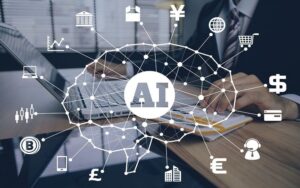2023 was a transformative year for technological innovation and digital transformation. The trend will continue as the pace of innovation and development of potentially disruptive emerging technologies increases every year in our exponential era. The question arises: what challenges and opportunities lie ahead for tech for us to learn and experience in 2024?
To help executives track the latest development, 47Billion has identified and interpreted the most significant technology trends unfolding today. While many trends are in the early stages of adoption and scale, executives can use this research to plan by developing an understanding of potential use cases and pinpointing the critical skills needed as they hire or upskill talent to bring these opportunities to functions.
Machine intelligence is all set to reduce the boundary between the real and virtual world, and shaping the ongoing evolution of the internet is going to impact our lives.
Here is an overview of game-changing trends, along with my predictions for how each of them will impact our lives.
Generative AI
Generative AI took center stage in 2023, but in 2024, its true might and value will become evident. While the term artificial intelligence may evoke concerns, especially for non-techies fearing job loss or world domination, the integration of generative AI into daily applications offers immense potential. Found in search engines, office software, design tools, and communication platforms, it functions as a super-smart assistant, enhancing efficiency and productivity.
By delegating routine tasks to AI—information retrieval, scheduling, compliance management—we gain more time for human skills like creativity and communication. Despite ethical and regulatory challenges, 2024 is poised to unveil the transformative impact of generative AI. Additionally, the merging of real and digital realms is accelerating, which is evident in technologies like augmented and virtual reality. Digital avatars, virtual spaces on social apps, and the rise of digital twins’ further blur distinctions between the physical and digital worlds, a trend set to intensify in the coming year.
Sustainable Technology
In 2024, sustainable technology will take center stage as countries and corporations strive to meet net-zero commitments. Individuals, too, are increasingly turning to technology to reduce their environmental impact. This involves eco-friendly alternatives like electric cars, bikes, and public transport, which are expected to gain more prominence. Additionally, innovative solutions such as carbon capture, green energy technologies, and the circular economy will play pivotal roles. Designing products with durability, recyclability, and reusability will be a crucial focus.
The tech world is set to embrace concepts like green cloud computing, prioritizing reduced energy consumption, and sustainable apps aimed at fostering eco-friendly lifestyles. However, challenges include the need for ethical material sourcing, managing infrastructure demands from changing consumer habits and addressing disparities in accessing green alternatives. A growing awareness of greenwashing, where efforts merely seek positive PR without substantial environmental impact, will also be on the rise. In 2024, sustainable technology will not only evolve but face crucial challenges in its pursuit of a greener future.
Quantum Computing
The anticipation around quantum computing is reaching a peak, and 2024 is poised to be the year when it transforms theoretical potential into tangible benefits. Quantum computers utilize the peculiar principles of quantum physics, like entanglement and superposition, enabling them to perform numerous calculations simultaneously. Unlike traditional bits, quantum bits (qubits) can exist in multiple states at once, challenging the binary 1s and 0s.
Early backers, including banks and financial services, aim to leverage quantum technology to amplify AI systems, particularly in fraud detection, risk management, and high-frequency trading. In 2024, quantum computing’s impact is expected to extend to various compute-intensive fields such as drug discovery, genome sequencing, cryptography, meteorology, material science, and optimizing complex systems like urban traffic flow. The potential breakthroughs in these areas signal an exciting era for addressing challenges on our planet through the transformative power of quantum computing.
Cyber Resilience
In the past three years, half of all businesses have been successfully attacked by cybercriminals, and by the end of 2024, these attacks could cost over $10 trillion. To tackle this growing problem, organizations are focusing on technology solutions not just for better security but also for something called “cyber resilience.” This means being ready to bounce back and keep things running even if there’s a cyber breach or unexpected issues.
Cyber resilience goes beyond the usual security measures. It involves having plans in place to keep businesses going, like having ways for people to work from home if they can’t get to the office. This might not seem like a regular part of cybersecurity, but it’s essential. Cyber resilience also includes using advanced techs like AI and machine learning for automatic defense, combining security measures with plans to keep things going smoothly, being aware of things like trickery by cyber criminals, and knowing how to handle public relations during a crisis. As cyber threats get trickier, the focus on cyber resilience is set to grow in 2024, impacting how businesses and regular folks deal with technology.
Platform Engineering –
This trend emphasizes the design and development of scalable, modular, and interoperable platforms that enable rapid and agile delivery of software solutions and services across different domains and ecosystems.
Platform engineering has become a new discipline that emerged in response to the growing complexity of modern cloud-native architectures. It describes the practice of building and maintaining an integrated product, can Internet Developer Platform, which acts as a flexible and supported abstraction layer between developers and underlying technologies of their applications.
It is now entering the next stage of its DevOps evolution. Predictions say by 2026, 80 percent of software engineering organizations will have platform teams building Internal Developer Platforms. Platform engineering looks like it’s here to stay.
AI-Augmented Development –
This trend leverages AI to augment and automate various aspects of software development, such as coding, testing, debugging, and deployment, as well as to enhance the productivity and creativity of developers and other stakeholders.
The trend explores the use of technologies such as augmented reality, virtual reality, 5G, and IoT to enhance the collaboration, communication, and productivity of remote and distributed workers, as well as to provide immersive and engaging experiences for customers and partners.
These advancements not only signify a shift in how we combat diseases but also point to a broader transformation in various sectors. The integration of cutting-edge biotechnological applications into our daily lives holds the potential to redefine not just healthcare but also our approach to sustainability, with sustainable alternatives like lab-grown meat and eco-friendly materials poised to become more commonplace in the evolving landscape of 2024.
AI Trust, Risk, and Security Management (AI TRiSM): This trend focuses on ensuring the trustworthiness, reliability, and ethics of AI systems and their outputs, as well as managing the risks and threats associated with them.




